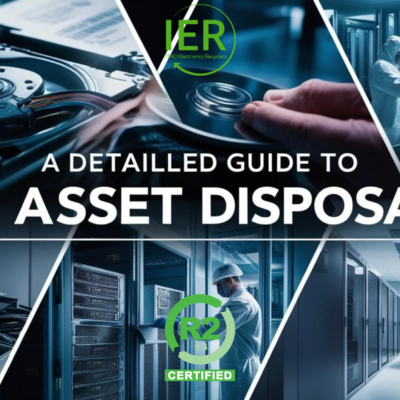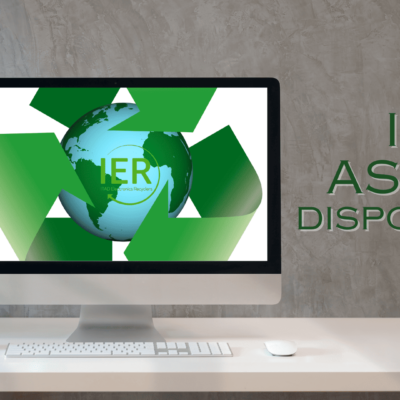Introduction
As technology advances, businesses must continually upgrade their IT infrastructure, leading to a growing need for secure and sustainable IT asset disposition (ITAD) services. With increasing data security concerns, evolving regulations, and environmental sustainability goals, the ITAD industry is undergoing significant transformation.
To stay ahead, businesses must understand the emerging trends shaping the future of ITAD. In this guide, we’ll explore key developments, including AI-driven asset tracking, stricter data security protocols, and the push for a circular economy, and how they impact your IT asset disposal strategy.
📌 Related: Efficient, Compliant, and Eco-Friendly IT Asset Disposal for Businesses
1. Increased Focus on Data Security and Compliance
With cyber threats becoming more sophisticated, businesses face heightened risks of data breaches when disposing of IT assets. Governments and industries are enforcing stricter regulations on data protection, making secure data destruction a top priority for ITAD providers.
Key Data Security Trends in ITAD:
- Stronger encryption and erasure standards such as NIST 800-88 for secure data sanitization.
- Blockchain-based tracking for tamper-proof audit trails in IT asset disposal.
- R2v3 and e-Stewards certification updates enforcing tighter compliance rules.
Companies must ensure that their ITAD providers comply with evolving data protection laws such as GDPR, HIPAA, and CCPA, reducing exposure to legal and financial risks.📌 Related: Why Data Security Should Be Your Top Priority in ITAD
2. AI and Automation Transforming ITAD Processes
Artificial intelligence (AI) and automation are revolutionizing IT asset management and disposition, making the process more efficient, secure, and cost-effective.
How AI is Reshaping ITAD:
- AI-driven asset tracking improves inventory management and lifecycle monitoring.
- Automated data erasure tools enhance security while reducing human error.
- Predictive analytics help businesses determine optimal times for asset resale or recycling.
By leveraging AI, businesses can maximize value recovery, ensure compliance, and streamline IT asset tracking.
📌 Related: How ITAD Can Generate Revenue for Your Business
3. The Shift Toward a Circular Economy
The traditional linear model of IT asset usage—purchase, use, and discard—is being replaced by a circular economy approach, emphasizing reuse, refurbishment, and recycling. Businesses are now prioritizing:
- IT asset refurbishment and resale to extend product lifecycles.
- Component harvesting to extract valuable materials for reuse.
- Zero-landfill policies to eliminate unnecessary e-waste.
Sustainability initiatives, such as R2 Certification and ESG compliance, are driving the adoption of IT asset reuse programs and sustainable ITAD practices.
📌 Related: How ITAD Can Help You Meet Your ESG Goals
4. Growing Demand for Certified ITAD Providers
With increasing regulatory scrutiny, businesses are seeking certified ITAD vendors to ensure compliance, security, and sustainability. Certifications such as:
- R2v3 Certification – Ensures responsible recycling and data security.
- e-Stewards Certification – Prevents unethical disposal and illegal e-waste exports.
- ISO 14001 & 45001 – Focuses on environmental and worker safety standards.
These certifications provide assurance that IT assets are managed responsibly, helping businesses reduce legal risks and enhance corporate sustainability efforts.
📌 Related: Understanding R2 Certification: What It Means for Your Business
5. E-Waste Legislation is Becoming Stricter
Governments worldwide are introducing tighter regulations to combat electronic waste pollution and ensure ethical IT asset disposal. Businesses must now:
- Follow mandatory e-waste recycling laws that dictate proper disposal methods.
- Comply with international data security standards, such as GDPR for EU businesses.
- Maintain ITAD audit records to prove compliance with regulatory requirements.
Failure to meet e-waste compliance standards can result in heavy fines, reputational damage, and loss of customer trust.
📌 link: EPA Electronics Recycling Regulations
6. Cloud and Remote ITAD Services Are Expanding
As businesses transition to cloud computing and remote work models, traditional IT asset management strategies are evolving. The rise of cloud-based ITAD solutions means:
- Remote data erasure services are gaining popularity for cloud-stored data.
- Decentralized IT asset management is becoming critical for remote teams.
- Digital ITAD platforms now allow real-time tracking of asset disposition.
Companies must adapt their ITAD policies to address the new challenges of cloud-based infrastructure and remote workforce dynamics.
📌 Related: How to Choose an ITAD Vendor You Can Trust
7. ITAD is Becoming a Revenue Generator
Many businesses overlook the financial opportunities within IT asset disposition. Instead of treating ITAD as an expense, companies are now leveraging it as a profit-generating strategy.
Ways to Generate Revenue Through ITAD:
- Reselling functional IT equipment in secondary markets.
- Implementing IT asset buyback programs to recover costs.
- Harvesting valuable components for resale or repurposing.
By working with an experienced ITAD provider, businesses can maximize ROI on retired IT assets while ensuring compliance.
📌 Related: How ITAD Can Generate Revenue for Your Business
Conclusion: Preparing for the Future of ITAD
The ITAD industry is rapidly evolving, with data security, automation, sustainability, and compliance driving major changes. Businesses must stay ahead of these trends to:
- Enhance data protection with advanced security protocols.
- Adopt AI-driven IT asset tracking for greater efficiency.
- Align IT disposal with circular economy goals to reduce environmental impact.
- Partner with certified ITAD providers to meet compliance requirements.
- Leverage ITAD for revenue recovery, maximizing IT asset value.
At IER ITAD Electronics Recycling, we stay ahead of industry trends to provide businesses with secure, compliant, and eco-friendly ITAD solutions. Contact us today to learn how your company can future-proof its IT asset disposal strategy.





